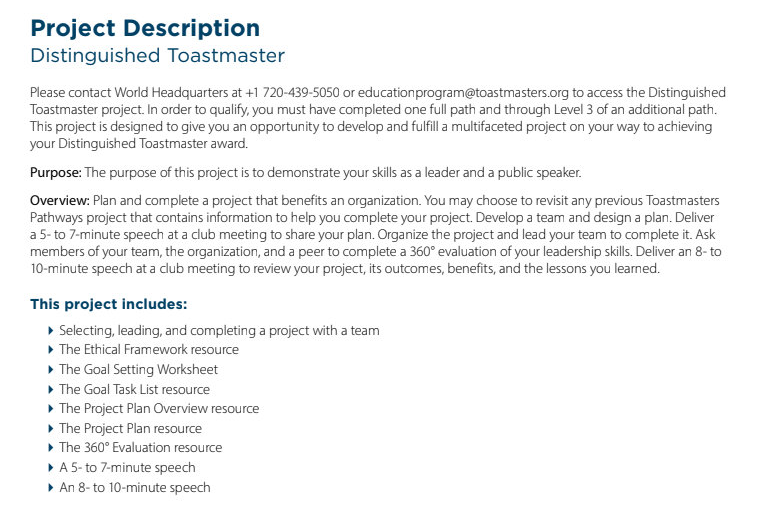What is the DTM Project?
The DTM Project is a self-designed project demonstrating the communication and leadership skills you’ve gained throughout your Toastmasters journey. You must create and implement the project—plan it, execute it, and show measurable results or impact. The project must be approved (or at least overseen) by a guidance committee that includes at least one Toastmaster. It can be carried out inside or outside of Toastmasters (professional, community, volunteer, religious, school, etc.). Show advanced application—leading, communicating, organizing, mentoring, influencing, etc.
|

